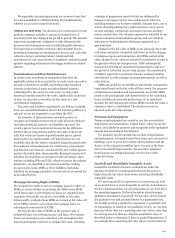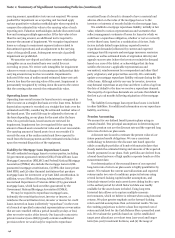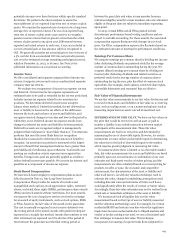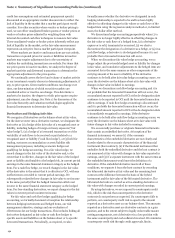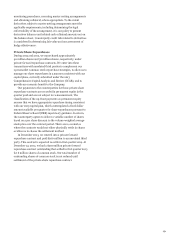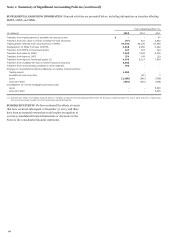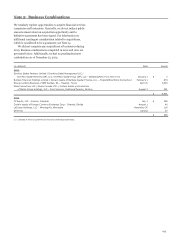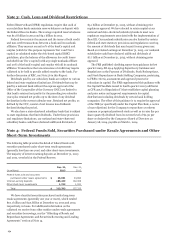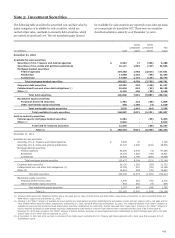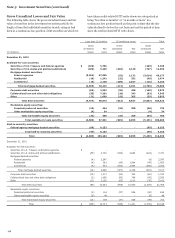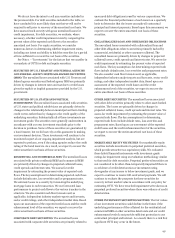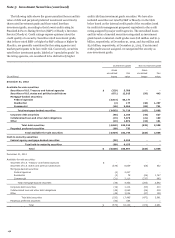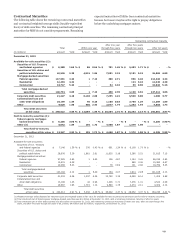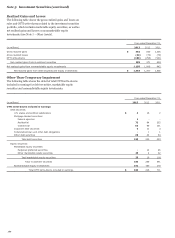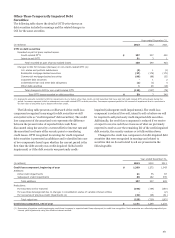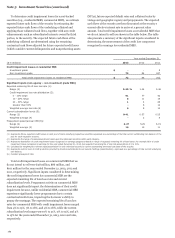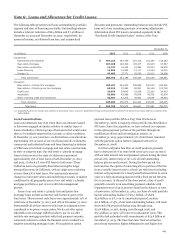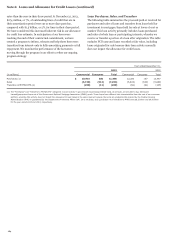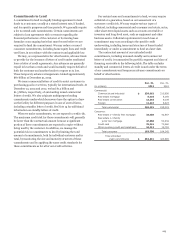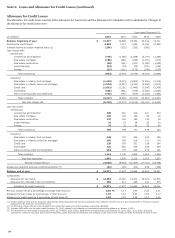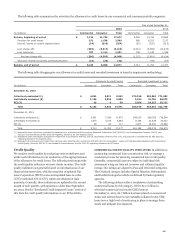Wells Fargo 2013 Annual Report Download - page 159
Download and view the complete annual report
Please find page 159 of the 2013 Wells Fargo annual report below. You can navigate through the pages in the report by either clicking on the pages listed below, or by using the keyword search tool below to find specific information within the annual report.We do not have the intent to sell any securities included in
the previous table. For debt securities included in the table, we
have concluded it is more likely than not that we will not be
required to sell prior to recovery of the amortized cost basis. We
have assessed each security with gross unrealized losses for
credit impairment. For debt securities, we evaluate, where
necessary, whether credit impairment exists by comparing the
present value of the expected cash flows to the securities’
amortized cost basis. For equity securities, we consider
numerous factors in determining whether impairment exists,
including our intent and ability to hold the securities for a period
of time sufficient to recover the cost basis of the securities.
See Note 1 – “Investments” for the factors that we consider in
our analysis of OTTI for debt and equity securities.
SECURITIES OF U.S. TREASURY AND FEDERAL AGENCIES
AND FEDERAL AGENCY MORTGAGE-BACKED SECURITIES
(MBS) The unrealized losses associated with U.S. Treasury and
federal agency securities and federal agency MBS are primarily
driven by changes in interest rates and not due to credit losses
given the explicit or implicit guarantees provided by the U.S.
government.
SECURITIES OF U.S. STATES AND POLITICAL
SUBDIVISIONS The unrealized losses associated with securities
of U.S. states and political subdivisions are primarily driven by
changes in the relationship between municipal and term funding
credit curves rather than by changes to the credit quality of the
underlying securities. Substantially all of these investments are
investment grade. The securities were generally underwritten in
accordance with our own investment standards prior to the
decision to purchase. Some of these securities are guaranteed by
a bond insurer, but we did not rely on this guarantee in making
our investment decision. These investments will continue to be
monitored as part of our ongoing impairment analysis, but are
expected to perform, even if the rating agencies reduce the credit
rating of the bond insurers. As a result, we expect to recover the
entire amortized cost basis of these securities.
RESIDENTIAL AND COMMERCIAL MBS The unrealized losses
associated with private residential MBS and commercial MBS
are primarily driven by changes in projected collateral losses,
credit spreads and interest rates. We assess for credit
impairment by estimating the present value of expected cash
flows. The key assumptions for determining expected cash flows
include default rates, loss severities and/or prepayment rates.
We estimate losses to a security by forecasting the underlying
mortgage loans in each transaction. We use forecasted loan
performance to project cash flows to the various tranches in the
structure. We also consider cash flow forecasts and, as
applicable, independent industry analyst reports and forecasts,
sector credit ratings, and other independent market data. Based
upon our assessment of the expected credit losses and the credit
enhancement level of the securities, we expect to recover the
entire amortized cost basis of these securities.
CORPORATE DEBT SECURITIES The unrealized losses
associated with corporate debt securities are primarily related to
unsecured debt obligations issued by various corporations. We
evaluate the financial performance of each issuer on a quarterly
basis to determine that the issuer can make all contractual
principal and interest payments. Based upon this assessment, we
expect to recover the entire amortized cost basis of these
securities.
COLLATERALIZED LOAN AND OTHER DEBT OBLIGATIONS
The unrealized losses associated with collateralized loan and
other debt obligations relate to securities primarily backed by
commercial, residential or other consumer collateral. The
unrealized losses are primarily driven by changes in projected
collateral losses, credit spreads and interest rates. We assess for
credit impairment by estimating the present value of expected
cash flows. The key assumptions for determining expected cash
flows include default rates, loss severities and prepayment rates.
We also consider cash flow forecasts and, as applicable,
independent industry analyst reports and forecasts, sector credit
ratings, and other independent market data. Based upon our
assessment of the expected credit losses and the credit
enhancement level of the securities, we expect to recover the
entire amortized cost basis of these securities.
OTHER DEBT SECURITIES The unrealized losses associated
with other debt securities primarily relate to other asset-backed
securities. The losses are primarily driven by changes in
projected collateral losses, credit spreads and interest rates. We
assess for credit impairment by estimating the present value of
expected cash flows. The key assumptions for determining
expected cash flows include default rates, loss severities and
prepayment rates. Based upon our assessment of the expected
credit losses and the credit enhancement level of the securities,
we expect to recover the entire amortized cost basis of these
securities.
MARKETABLE EQUITY SECURITIES Our marketable equity
securities include investments in perpetual preferred securities,
which provide attractive tax-equivalent yields. We evaluated
these hybrid financial instruments with investment-grade
ratings for impairment using an evaluation methodology similar
to that used for debt securities. Perpetual preferred securities are
not considered to be other-than-temporarily impaired if there is
no evidence of credit deterioration or investment rating
downgrades of any issuers to below investment grade, and we
expect to continue to receive full contractual payments. We will
continue to evaluate the prospects for these securities for
recovery in their market value in accordance with our policy for
estimating OTTI. We have recorded impairment write-downs on
perpetual preferred securities where there was evidence of credit
deterioration.
OTHER INVESTMENT SECURITIES MATTERS The fair values
of our investment securities could decline in the future if the
underlying performance of the collateral for the residential and
commercial MBS or other securities deteriorate and our credit
enhancement levels do not provide sufficient protection to our
contractual principal and interest. As a result, there is a risk that
significant OTTI may occur in the future.
157


